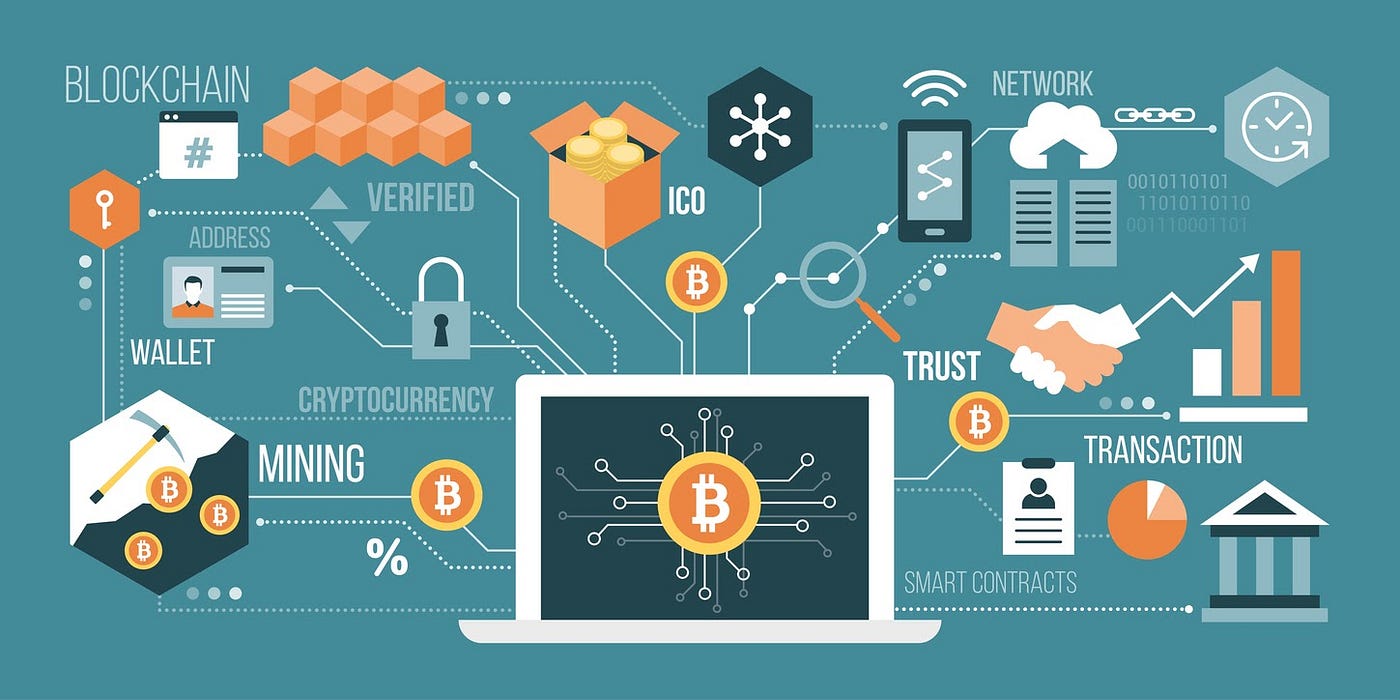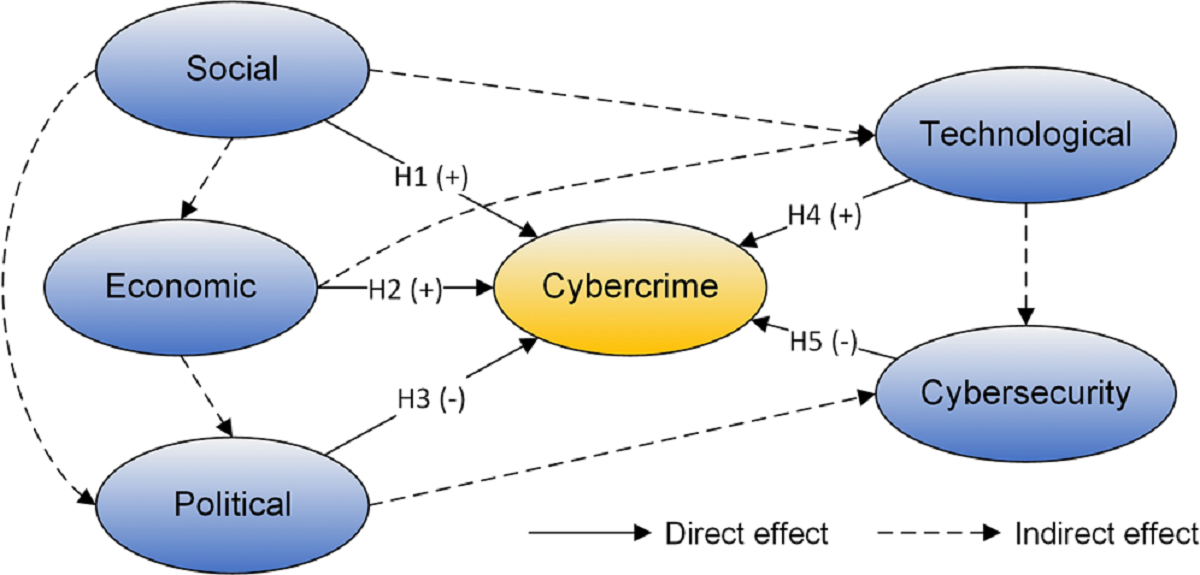Introduction
Welcome to the world of blockchain cybersecurity, where the groundbreaking technology of blockchain combines with the vital need for enhanced security measures. In today’s digital age, the threat of cyber attacks is a constant concern for individuals and organizations alike. With the ever-growing reliance on digital transactions and data exchange, it is imperative to safeguard the integrity and confidentiality of our information.
Blockchain technology has emerged as a potential solution to many of the security vulnerabilities present in traditional systems. By providing a decentralized and immutable ledger, it offers a more secure and transparent platform for conducting transactions and storing data. However, even with the robustness of blockchain, cybersecurity remains a crucial consideration.
Cybersecurity encompasses a range of measures that aim to protect computer systems, networks, and data from unauthorized access, use, and damage. It involves a proactive approach to identifying potential threats, implementing protective measures, and responding effectively to any breaches that may occur. In the context of blockchain, cybersecurity involves safeguarding the integrity of the blockchain network, protecting private keys, and ensuring the confidentiality and authenticity of transactions.
The importance of cybersecurity in the realm of blockchain cannot be overstated. As blockchain technology continues to gain traction across industries, it becomes an attractive target for hackers and malicious actors looking to exploit vulnerabilities. The decentralized nature of blockchain, while offering benefits such as resilience and transparency, also presents unique challenges in terms of securing the network and preventing unauthorized access.
Moreover, the increasing adoption of blockchain in critical sectors such as finance, healthcare, and supply chain management amplifies the need for robust cybersecurity measures. The potential impact of a successful cyber attack on these industries is far-reaching, with consequences including financial loss, compromised sensitive information, and damage to trust and reputation.
In this article, we will explore the challenges involved in ensuring cybersecurity within the blockchain ecosystem. We will also discuss common cybersecurity attacks on blockchain networks and examine strategies to enhance blockchain security. By understanding the importance of cybersecurity and taking proactive measures, we can unlock the full potential of blockchain technology while keeping our data and transactions secure.
What is Blockchain?
Blockchain is a decentralized, distributed ledger technology that enables secure and transparent transactions and data storage. It functions as a digital record of transactions, stored in blocks that are linked together using cryptographic principles. Each block contains a unique identifier called a hash, which is generated through a complex mathematical process.
The decentralized nature of blockchain means that it is not controlled by a single entity, such as a central bank or government. Instead, it operates on a peer-to-peer network, where multiple participants called nodes validate and store transactions. This distributed consensus mechanism ensures that no single party has full control over the network, making it resistant to tampering and fraud.
One of the key features of blockchain is its immutability. Once a transaction is recorded on the blockchain, it becomes permanent and cannot be altered retroactively. This ensures the integrity and transparency of the data stored on the blockchain, making it highly reliable for recording transactions and storing sensitive information.
Blockchain technology has gained significant attention due to its potential applications beyond cryptocurrencies like Bitcoin. It can be used to streamline processes, reduce costs, and increase efficiency in various industries, including finance, supply chain management, healthcare, and more.
In a blockchain-based system, transactions are verified and added to the ledger through a consensus mechanism. This mechanism ensures that all participants agree on the validity of a transaction before it is added to the blockchain. Depending on the type of blockchain, consensus can be achieved through different algorithms, such as Proof of Work (PoW) or Proof of Stake (PoS).
Furthermore, blockchain technology introduces the concept of smart contracts. These are self-executing contracts with predefined rules and conditions encoded within the blockchain. Smart contracts automate the execution and enforcement of agreements, eliminating the need for intermediaries and reducing the risk of fraud.
The utilization of blockchain technology offers numerous benefits, including increased security, transparency, traceability, and efficiency. By eliminating the need for intermediaries, it reduces costs and speeds up transaction times. However, it is essential to ensure the cybersecurity of the blockchain ecosystem to fully capitalize on its potential.
What is Cybersecurity?
Cybersecurity is the practice of protecting computer systems, networks, and data from unauthorized access, use, and damage. It encompasses a range of measures, technologies, and processes designed to prevent, detect, and respond to security incidents and breaches. With the increasing reliance on digital technology and the exponential growth of cyber threats, cybersecurity has become a critical concern for individuals, organizations, and governments.
The objective of cybersecurity is to ensure the confidentiality, integrity, and availability of data and resources. Confidentiality involves protecting sensitive information from unauthorized disclosure. Integrity ensures that data remains intact and unaltered, while availability ensures that data and systems are accessible when needed.
To achieve these goals, cybersecurity employs a multi-layered approach that combines technical solutions, policies, and user awareness. It involves identifying potential vulnerabilities and implementing preventive measures to mitigate risks. This includes the use of firewalls, encryption, access controls, intrusion detection systems, and regular software updates.
Moreover, cybersecurity includes measures to detect and respond to security incidents. This involves monitoring network traffic, analyzing patterns, and employing advanced threat detection technologies. In the event of a breach, effective incident response plans and strategies are crucial to minimize the damage, contain the incident, and restore systems and data to normal functionality.
Cybersecurity is not limited to protecting against external threats but also involves addressing internal risks. Insider threats, such as disgruntled employees, careless practices, or accidental data leakage, can pose significant risks to the security of an organization’s systems and data. Therefore, cybersecurity includes measures to prevent and detect internal security breaches.
As technology evolves, the cybersecurity landscape continues to evolve as well. New threats emerge, and attackers constantly devise new techniques to exploit vulnerabilities. Therefore, ongoing monitoring, training, and updating of cybersecurity practices are essential to stay ahead of potential threats.
Effective cybersecurity requires collaboration and cooperation among various stakeholders. Individuals, organizations, and governments must all play their part in ensuring a secure digital environment. This includes practicing good cybersecurity hygiene, implementing robust security measures, and supporting policies and regulations that promote cybersecurity.
In summary, cybersecurity is a vital aspect of digital life that aims to safeguard computer systems, networks, and data from threats. It involves a comprehensive approach to prevent, detect, and respond to security incidents. By investing in cybersecurity measures, individuals and organizations can protect their valuable assets and preserve the integrity of the digital world.
Why is Cybersecurity important for Blockchain?
Cybersecurity is of utmost importance in the context of blockchain technology due to the unique challenges and vulnerabilities that arise in a decentralized and transparent network. While blockchain offers enhanced security through its cryptographic principles and consensus mechanisms, it is not immune to cybersecurity threats. Here are several key reasons why cybersecurity is crucial for blockchain:
1. Protection of Transactions and Data: Blockchain technology is widely used for conducting transactions and storing sensitive data. It is imperative to ensure the confidentiality, integrity, and authenticity of these transactions. Cybersecurity measures such as encryption, access controls, and secure key management help protect transactions from interception, tampering, and unauthorized access.
2. Prevention of Unauthorized Access: Blockchain relies on the participation of multiple nodes to validate and store transactions. Each node must ensure its own security to prevent unauthorized access. If a node within the network is compromised, it can lead to significant vulnerabilities with potential exploitation of the entire blockchain network. Robust cybersecurity measures, such as secure access controls and regular security audits, help prevent unauthorized access and maintain the overall security of the blockchain network.
3. Mitigation of Double-Spending Attacks: Double-spending attacks can occur when an individual attempts to spend the same cryptocurrency more than once. Such attacks compromise the integrity of the blockchain, potentially leading to financial losses. Cybersecurity measures, such as consensus mechanisms like Proof of Work (PoW) or Proof of Stake (PoS), help prevent double-spending attacks and ensure the accuracy and reliability of the blockchain ledger.
4. Protection of Private Keys: Private keys are crucial components of blockchain transactions and are used to authenticate and authorize transactions. Any compromise of private keys can lead to unauthorized access to funds or sensitive data. Robust cybersecurity practices, including secure key management, multi-factor authentication, and strong encryption, help protect private keys from theft or unauthorized use.
5. Prevention of Sybil Attacks: Sybil attacks involve the creation of multiple fraudulent entities within a network to gain control or influence over the consensus mechanism. These attacks can undermine the integrity and security of the blockchain. Implementing strong identity verification and validation mechanisms can help prevent Sybil attacks and ensure the authenticity and trustworthiness of blockchain transactions.
6. Securing Smart Contracts: Smart contracts are self-executing agreements stored on the blockchain. They automate processes and transactions, removing the need for intermediaries. However, vulnerabilities in smart contract code can be exploited by attackers. Robust code review, secure development practices, and regular auditing are essential cybersecurity measures to prevent exploits and vulnerabilities in smart contracts.
7. Protection from External Threats: Blockchain networks are exposed to various external threats, including Distributed Denial of Service (DDoS) attacks, malware, and phishing attempts. These threats can disrupt network operations, compromise data integrity, and compromise the security of the blockchain. Implementing robust cybersecurity measures, such as firewalls, intrusion detection systems, and regular network monitoring, helps protect against external threats.
In summary, cybersecurity is essential for blockchain to ensure the integrity, confidentiality, and availability of transactions and data. It guards against unauthorized access, mitigates attacks, protects private keys, and preserves the trust and reliability of the blockchain network. By implementing robust cybersecurity practices, blockchain can fully leverage its potential while ensuring a secure and trusted platform for various applications.
Challenges in Blockchain Cybersecurity
While blockchain technology offers numerous benefits in terms of security and transparency, it also presents unique challenges in the realm of cybersecurity. Understanding these challenges is crucial for effectively safeguarding blockchain networks and ensuring the integrity of transactions and data. Here are some of the key challenges faced in blockchain cybersecurity:
1. Vulnerabilities in Smart Contract Code: Smart contracts are susceptible to vulnerabilities and coding errors that can be exploited by attackers. Issues such as reentrancy attacks, integer overflow, or insecure code implementation can lead to financial losses or unauthorized access. Ensuring secure coding practices, thorough testing, and regular auditing of smart contracts are essential to mitigate such vulnerabilities.
2. 51% Attack: In a blockchain network, a 51% attack occurs when a single entity or group controls a majority of the network’s computing power. This control allows them to manipulate transactions, reverse payments, or disrupt the network’s operation. Mitigating 51% attacks requires a decentralized network with sufficient distribution of computing power, combined with enhanced security measures.
3. Privacy Concerns: While blockchain provides transparency, privacy concerns arise when sensitive information is stored on the blockchain. Public blockchains, by design, make all transactions and data visible to participants. Privacy-focused blockchains, also known as private or permissioned blockchains, can address this concern by implementing access controls and encryption techniques to protect sensitive information.
4. Regulatory Compliance: Blockchain implementation often intersects with various regulatory frameworks, including data protection and financial regulations. Compliance with these regulations can be challenging due to the decentralized nature of blockchain and the difficulty in enforcing regulatory policies across the network. Developing appropriate governance models and mechanisms to ensure regulatory compliance is essential.
5. Lack of Standardization: The absence of standardized protocols, formats, and security measures across different blockchain networks poses challenges in integrating and interoperability. It increases the risk of vulnerabilities and creates complexities when transacting between different blockchain implementations. Developing industry-wide standards and best practices can help address standardization challenges in blockchain cybersecurity.
6. Insider Threats: Despite the decentralized nature of blockchain, insider threats still exist. Malicious actors within organizations or individuals with authorized access can misuse their privileges to compromise the security of the blockchain network. Implementing robust access controls, regular security training, and monitoring mechanisms are vital to mitigate insider threats.
7. Scalability and Performance: Scalability limitations in blockchain networks, such as transaction processing speed and network throughput, present challenges in maintaining adequate performance, especially in high-demand scenarios. Scaling solutions that address these limitations without compromising security, such as layer 2 solutions or sharding, need to be implemented with careful consideration of cybersecurity implications.
Addressing these challenges requires a comprehensive approach to cybersecurity in blockchain implementations. This includes adopting secure coding practices, conducting regular audits, implementing rigorous access controls, establishing governance frameworks, and fostering collaboration among stakeholders to develop industry-wide cybersecurity standards. By addressing these challenges effectively, the potential of blockchain technology can be fully realized in a secure and trustworthy manner.
Common Cybersecurity Attacks on Blockchain
Blockchain technology, despite its inherent security features, is not immune to cyber attacks. Malicious actors continuously adapt and evolve their strategies to exploit vulnerabilities in blockchain networks. Understanding the common cybersecurity attacks on blockchain is crucial for implementing effective protective measures. Here are some of the most common attacks:
1. 51% Attacks: A 51% attack occurs when a single entity or group controls a majority of the computing power in a blockchain network. This control enables the attacker to manipulate transactions, reverse payments, and potentially control the entire network. Preventing 51% attacks requires a distributed network with sufficient computational power and a consensus mechanism that resists centralization.
2. Sybil Attacks: Sybil attacks involve an adversary creating multiple fake identities or nodes within a blockchain network to gain control over the consensus process. By controlling a large number of nodes, the attacker can manipulate the network’s decision-making and compromise its integrity. Implementing robust identity verification mechanisms and consensus algorithms that resist Sybil attacks can mitigate this threat.
3. Double-Spending Attacks: Double-spending attacks aim to spend the same cryptocurrency or digital asset twice. Attackers exploit vulnerabilities in consensus mechanisms or attempt to manipulate transaction verification processes to spend the same funds more than once. Preventing double-spending attacks requires robust transaction verification and validation mechanisms, such as using appropriate consensus algorithms and ensuring transaction finality.
4. Smart Contract Exploitation: Smart contracts are self-executing agreements with predefined rules stored on the blockchain. However, if smart contracts contain vulnerabilities or coding errors, attackers can exploit them to gain unauthorized access, manipulate funds, or disrupt the intended functionality of the contract. Implementing secure coding practices, conducting thorough code audits, and performing rigorous testing can mitigate smart contract exploitation.
5. Distributed Denial of Service (DDoS) Attacks: DDoS attacks aim to overwhelm a network with a flood of traffic, rendering it inaccessible to legitimate users. In the context of blockchain, DDoS attacks can disrupt network operations, prevent transaction validation, or hinder consensus mechanisms. Implementing robust network monitoring, traffic filtering, and mitigation techniques are essential to mitigate DDoS attacks.
6. Phishing and Social Engineering: Phishing attacks attempt to trick users into revealing sensitive information, such as private keys or login credentials, by impersonating legitimate entities. Social engineering techniques are also employed to manipulate individuals into performing malicious actions. Educating users about phishing risks, implementing multi-factor authentication, and promoting cybersecurity awareness are effective defenses against these attacks.
7. Malware and Ransomware Attacks: Malware and ransomware attacks can compromise the security of blockchain networks by targeting users’ devices or endpoints. Infected devices can be used to steal private keys, capture sensitive information, or launch attacks against the blockchain network. Implementing robust endpoint protection, regularly updating software, and practicing secure browsing habits are essential to mitigate malware and ransomware attacks.
By familiarizing themselves with these common cybersecurity attacks, blockchain stakeholders can proactively implement preventive measures and develop effective incident response plans. Regular security audits, penetration testing, and collaboration with cybersecurity experts can help identify and address vulnerabilities in blockchain networks, ensuring the security and trustworthiness of this revolutionary technology.
Strategies to Enhance Blockchain Cybersecurity
As the adoption of blockchain technology increases, it becomes vital to implement robust cybersecurity strategies to ensure the integrity and security of blockchain networks. By adopting proactive measures and best practices, we can enhance blockchain cybersecurity. Here are some key strategies to consider:
1. Secure Key Management: Protecting private keys is crucial in blockchain security. Implementing proper key management practices, such as using hardware wallets or secure key storage solutions, helps safeguard private keys from unauthorized access or theft. Regularly updating and rotating keys is also important to mitigate risks.
2. Robust Identity Verification: Implementing strong identity verification mechanisms safeguards the integrity of the network. Advanced verification techniques, such as multi-factor authentication and biometrics, enhance the security of user identities and prevent unauthorized access.
3. Regular Security Audits: Conducting regular security audits helps identify vulnerabilities and weaknesses in the blockchain network. Independent third-party audits, code reviews, and penetration testing can uncover potential loopholes and provide recommendations for improvement.
4. Secure Smart Contract Development: Thoroughly vetting smart contract code and implementing secure coding practices are crucial to prevent vulnerabilities and exploits. Regular code audits, testing, and utilizing formal verification techniques can help identify and rectify potential flaws in smart contracts.
5. Consensus Mechanism Selection: Choosing the appropriate consensus algorithm is essential to ensure the security and integrity of the blockchain network. Each consensus mechanism has its own strengths and weaknesses, and selecting one that aligns with the specific use case and network requirements is critical.
6. Network and Node Security: Protecting the blockchain network and individual nodes from attacks is vital. Implementing firewalls, intrusion detection systems, and regular security updates helps mitigate risks associated with unauthorized access, malware, and Distributed Denial of Service (DDoS) attacks.
7. Regular Updates and Patches: Keeping the blockchain network and associated software up to date with the latest security patches is crucial. Regular updates help address known vulnerabilities and protect against emerging threats.
8. Education and Training: Educating users and stakeholders about blockchain security risks and best practices is essential. Promoting cybersecurity awareness, providing training on secure practices, and fostering a culture of vigilance among network participants helps prevent inadvertent breaches.
9. Collaboration and Information Sharing: Engaging with the broader blockchain community and sharing information on cybersecurity threats and countermeasures is beneficial. Collaborating with security researchers, participating in forums, and sharing best practices can improve the overall security posture of the blockchain ecosystem.
10. Incident Response Planning: Developing robust incident response plans is essential to effectively respond to security incidents. Establishing clear protocols, assigning responsibilities, and conducting regular drills and simulations help minimize the impact of a security breach and facilitate a swift and coordinated response.
By implementing these strategies, blockchain networks can enhance their cybersecurity posture and mitigate potential risks. The ever-evolving nature of cybersecurity necessitates a continuous focus on improving security practices and staying updated with emerging threats and best practices. Taking a proactive approach to cybersecurity ensures the trust, integrity, and security of blockchain technology in a rapidly evolving digital landscape.
Conclusion
Cybersecurity is paramount in the world of blockchain, where the decentralized and transparent nature of the technology intersects with the need for data protection and secure transactions. As blockchain continues to revolutionize various industries, it is imperative to prioritize cybersecurity to safeguard the integrity, confidentiality, and availability of blockchain networks and data.
In this article, we explored the fundamental concepts of blockchain and cybersecurity, understanding the importance of cybersecurity in the context of blockchain technology and the challenges it presents. We discussed common cybersecurity attacks that can compromise the security of blockchain networks, as well as strategies to enhance blockchain cybersecurity.
By implementing secure key management practices, robust identity verification mechanisms, regular security audits, and secure smart contract development, blockchain stakeholders can mitigate vulnerabilities and protect against potential attacks. Additionally, the selection of an appropriate consensus mechanism, network and node security measures, and staying updated with security patches play crucial roles in enhancing blockchain security.
Furthermore, the importance of education and training, collaboration and information sharing, and incident response planning cannot be understated. By promoting cybersecurity awareness among users and fostering a culture of vigilance, sharing information and best practices with the community, and having well-defined incident response plans, blockchain networks can better withstand and respond to security incidents.
As the field of cybersecurity evolves, it is essential for blockchain stakeholders to remain diligent and adapt to emerging threats and best practices. Continual monitoring, evaluation, and improvement of cybersecurity measures are necessary to address the evolving landscape of cybersecurity challenges.
By embracing these strategies, blockchain can continue to drive innovations and transformations across industries, revolutionizing the way we conduct transactions and store data securely. With a steadfast commitment to cybersecurity, we can fully unlock the potential of blockchain technology and build a more secure and trusted digital future.

























